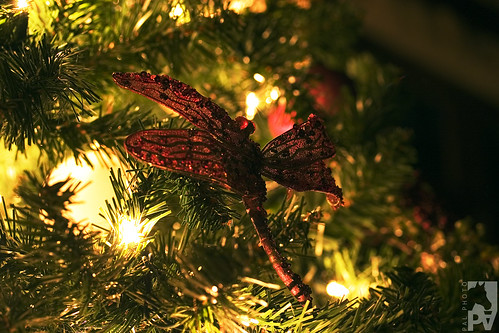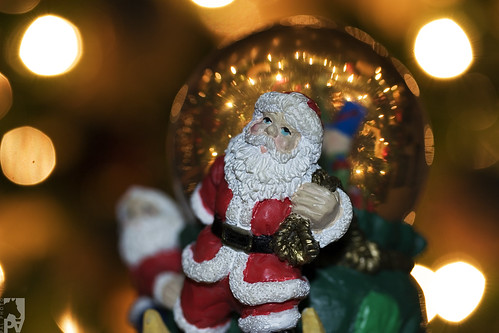viernes, 12 de diciembre de 2008
'Tis the Season...
Papá Noel, Olentzero, Santa Claus, Viejito Pascuero, Colacho o San Nicolás son los nombres con los cuales se conoce en el mundo hispano al personaje legendario que según la cultura occidental trae regalos a los niños por Navidad. Es un personaje inspirado en un obispo cristiano de origen griego llamado Nicolás, que vivió en el siglo IV en Anatolia, en los valles de Licia (en la actual Turquía). Era una de las personas más veneradas por los cristianos de la Edad Media, del que aún hoy se conservan sus reliquias en la basílica de Bari (Italia).
Se estima que Nicolás de Bari nació cerca del año 280 en Patara, una ciudad del distrito de Licia, en la actual Turquía. Era hijo de una familia acomodada y creció bajo los tirantes deseos de sus padres. Su padre deseaba que siguiera sus pasos comerciales en el Mar Adriático, mientras su madre pretendía que fuera sacerdote como su tío, el obispo de Mira (antigua ciudad griega de la Anatolia Egea, actualmente Turquía).
Lamentablemente, la peste solucionó su dilema, al llevarse a sus padres, mientras trataban de ayudar a los enfermos de su ciudad. El muchacho, conmovido con la desgraciada situación de su gente ante semejante enfermedad, repartió sus bienes entre los necesitados y partió hacia Mira para vivir con su tío y ordenarse como sacerdote, cosa que logró a los 19 años. Más tarde, al morir su tío fue elegido para reemplazarlo.
De él, se cuentan cientos de historias, especialmente narrando sus milagros y sus bondades para con la gente pobre y en especial con los niños.
---------------------------------------
Papa Noel, Santa Claus, Saint Nick are some of the names given to the legendary character that according to western culture brings gifts to children on Christmas. It is a character inspired on a greek christian bishop called Nicoles who lived in the fourth century in Anatolia on the valleys of Licia (current Turkey). He was one of the most venerated persons of the middle ages. Some of his reliqs are still preserved in the Bari Basilica (Italy).
It is believed that Nicolas of Bari was born around year 280 in Patara, a town on the district of Licia, curent Turkey. He was the son of a well to do family and grew up under the conflicting wishes of his parents. His father wished for him to follow his commercial footsteps on the Adriatic Sea; while his mother wanted him to become a priest as his uncle, the bishop of Mira (old greek town of the Egean Anatolia, currently Turkey).
Unfortunately, the pest solved the dilemma, as it took both his parents, while they helped the sick of their town. The kid, moved by the unfortunate situation of his town's folk, gave all his posessions to the needy and departed to Mira, to live with his uncle, the bishop, and be ordained as a priest at age 19. Later, upon his uncle's death, he was chosen to replace him as Bishop of Mira.
There are countless stories and anecdoted told about Nicolas of Mira or of Bari, specially those that narrate his miracles and goodnes towards poor people and especially children.
The sights, the sounds, the smells...
Cuando los primeros cristianos llegaron al norte de Europa, encontraros que sus habitantes celebraban el nacimiento de Frey, dios del sol y la fertilidad, adornando un árbol perenne, en la fecha próxima a la Navidad cristiana. Este árbol simbolizaba al árbol del Universo, llamado Yggdrasil, en cuya copa se hallaba Asgard (la morada de los dioses) y el Valhalla (el palacio de Odín) y en las raíces más profundas estaba Helheim (el reino de los muertos). Posteriormente con la evangelización de esos pueblos, los cristianos tomaron la idea del árbol, para celebrar el nacimiento de Cristo, pero cambiándole totalmente el significado.
Se dice que san Bonifacio (680-754), evangelizador de Alemania, tomó un hacha y cortó un árbol que representaba al Yggdrasil (aunque también pudo ser un árbol consagrado a Thor), y en su lugar plantó un pino, que por ser perenne, simbolizó el amor de Dios, adornándolo con manzanas y velas. Las manzanas simbolizaban el pecado original y las tentaciones, mientras que las velas representaban la luz de Jesucristo como luz del mundo. Conforme pasó el tiempo, las manzanas y las luces, se transformaron en esferas y otros adornos.
Para su decoración se emplea en la actualidad una gran diversidad de objetos y elementos, siendo los más tradicionales:
* Estrella: colocada generalmente en la punta del árbol, representa la fe que debe guiar la vida del cristiano, recordando a la estrella de Belén.
* Bolas: San Bonifacio adornó el árbol con manzanas, respresentando con ellas las tentaciones. Hoy día, se acostumbra a colocar bolas o esferas, que simbolizan los dones de Dios a los hombres.
* Luces: en un principio velas, representan la luz de Cristo.
El árbol de Navidad recuerda al árbol del Paraíso de cuyos frutos comieron Adán y Eva, y de donde vino el pecado original; y por lo tanto recuerda que Jesucristo ha venido a ser Mesías prometido para la reconciliación. Pero también representa al árbol de la Vida o la vida eterna, por ser de tipo perenne.
La forma triangular del árbol (por ser generalmente una conífera), representa a la Santísima Trinidad. Las oraciones que se realizan durante el Adviento se diferencian por un color determinado, y cada uno simboliza un tipo:
* El azul las oraciones de reconciliación.
* El plata las de agradecimiento.
* El oro las de alabanza.
* El rojo las de petición.
---------------------------------------
When the first christians arrived in northern Europe they found the northern people celebrated the birth of Frey, the god of the sun and fertility, by dressing up a perennial tree, on a date close to Christmas. This tree simbolized the tree of the Universe, called Yggdrasil. Asgard (dwelling of the gods) and Valhalla (Odin's Palace) were located on the tree top and on the deepest roots was Helheim (the kingdom of the dead). Afther the evangelization of these cultures, the christians took the idea of the tree to conmemorate the birth of Christ, completely changing its meaning.
It is said that sain Boniface (680-754), Germany's evangelist, took an axe and cut a tree that represented the Yggdrasil (although there are reports it could also have been a tree consecrated to Thor) and in its place planted a pine, that, being a perennial, simbolized God's love. He adorned the tree with apples and candles. The apples represented the original sin and temptation and the candles represented Jesus Christ's light as the light of the world. As time passed by, the apples and candles transformed into spheres and other things.
Nowadays, a wide array of objects are used in decorating the Christmas tree, being the more traditional:
* Star: Usually placed on the top of the tree, represents the faith that must guide the christian's life, remembering the star of Betlehem.
* Balls: Saint Boniface adorned the tree with apples representing temptation. Today the balls simbolize God's gifts to men.
*Lights: representing Jesus Christ's light.
The christmas tree reminds us of the Paradise tree, from which Adam and Eve ate the fruit and from whence came the original sin; and therefore, it reminds us of Jesus Christ that came to be the Mesiah. The christmas tree also represents the tree of life or eternal life, as it is usually a perennial.
The triangular shape of the christmas tree (as it usually is a conifer), representas the Holy Trinity. The prayers during advent are categorized by color and each color has a different meaning:
* Blue: Reconciliation
* Silver: Thanks
* Gold: Praise
* Red: Plea
Suscribirse a:
Comentarios (Atom)



